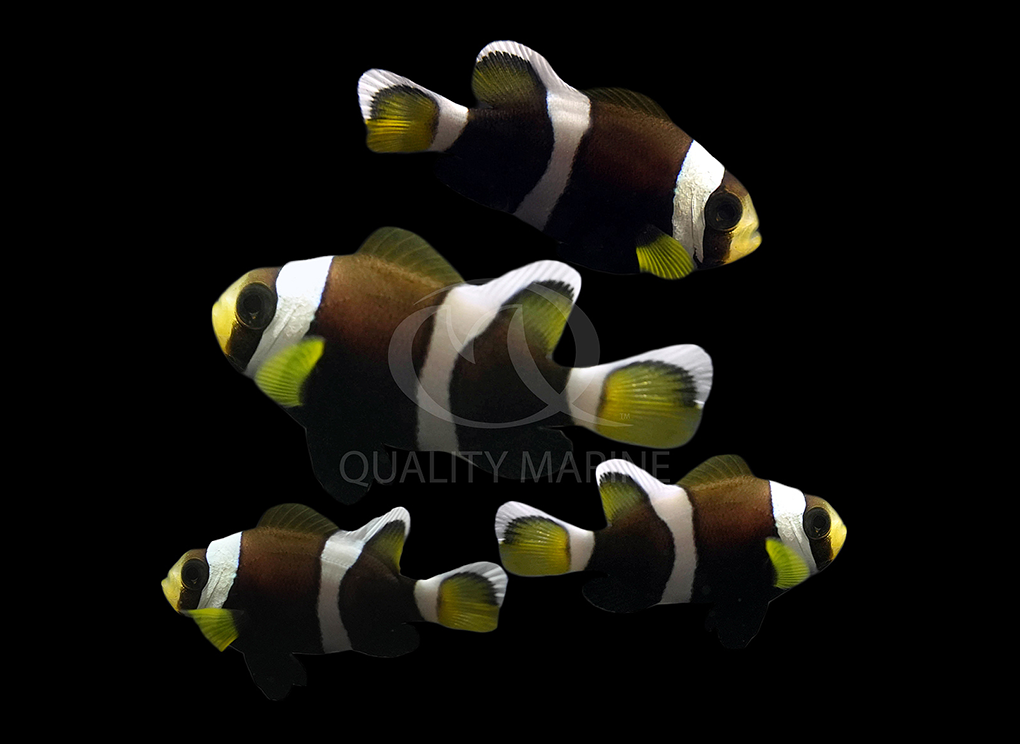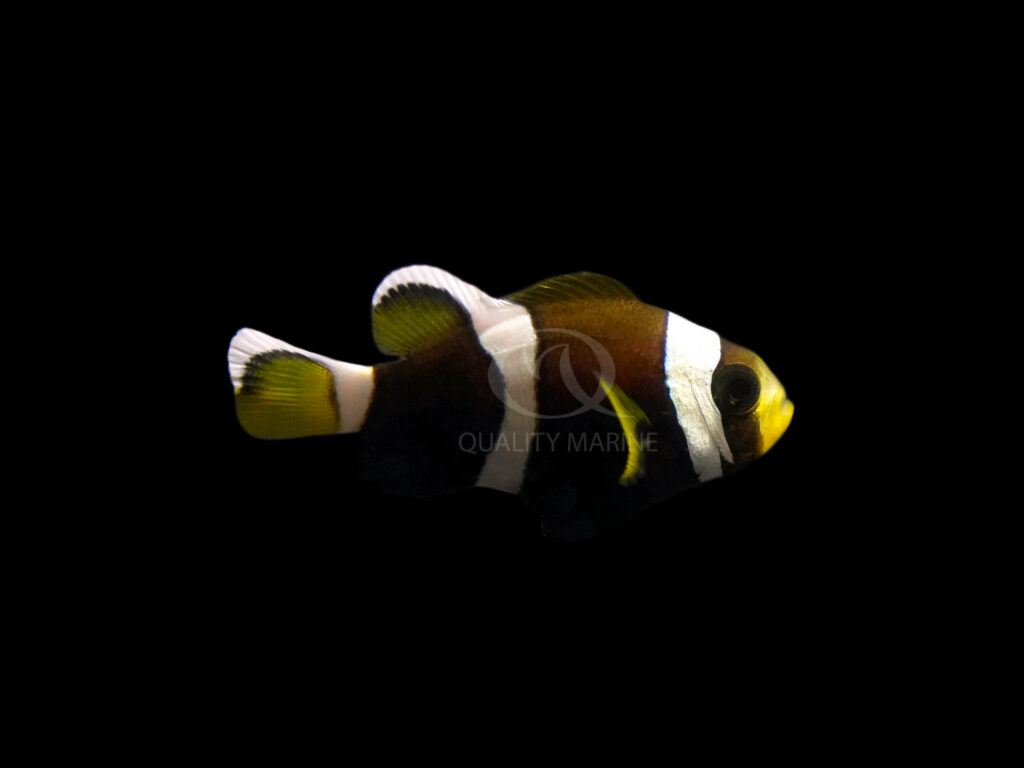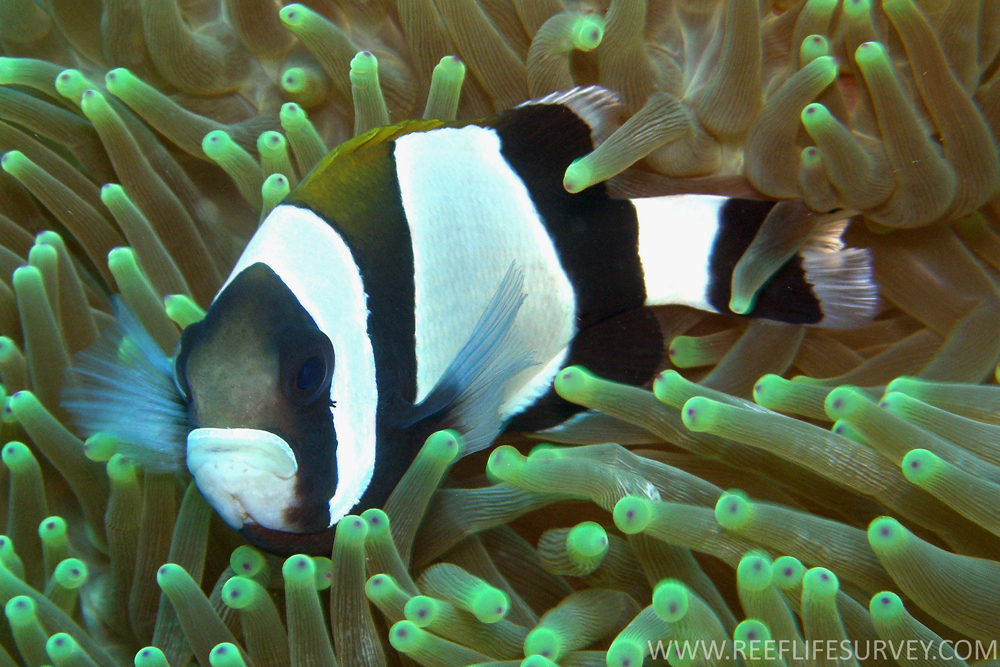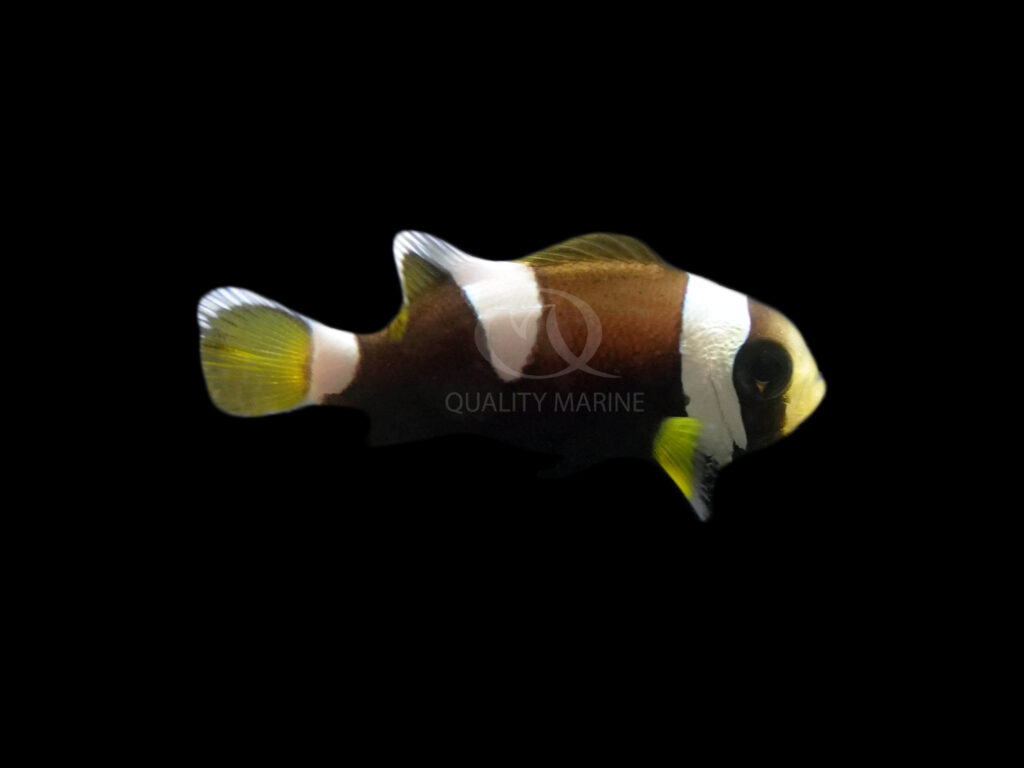
Director of Marketing and Brand Development.
The Latezonzatus Clownfish (often shorthanded “Latz”) is known for being an expensive rarity in the aquarium trade and a challenging species to keep successfully as a wild-caught specimen. They are only rarely captive-bred, arguably being the most difficult clownfish to breed, and even more challenging to produce in quantity. Aquarists who appreciate a large—up to 5.5 inches (14 cm) long—and unique clownfish won’t want to miss this latest release from Quality Marine Labs. – Matt Pedersen
via Quality Marine
Clownfish have long been one of the most popular fish and are considered to be one of the best starter fish in the marine aquarium trade. Advances in culturing techniques have allowed commercial farms in the US and around the world to grow thousands of clownfish each year for the marine ornamentals trade. In December, Quality Marine announced a first in our QM Labs with the successful culture of Purple Tangs (Zebrasoma xanthurum). Now, we are again proud to announce the successful culture of the Wide-band Clownfish (Amphiprion latezonatus) in our QM Labs Aquaculture facility.

In the wild, Wide-band Clownfish are found in rocky and coral reef habitats, at depths of 10-45 meters, in Eastern Australia, Lord Howe, and New Caledonia. Like most clownfish, the Wide-band Clownfish is known to create a symbiotic relationship with anemones, which they use as a source of protection; the pairing makes a great display in aquaria. This species of clownfish is uncommon in the aquarium trade, which makes this achievement even more exciting for everyone here at Quality Marine!

This species was successfully aquacultured in our state-of-the-art hatchery in Los Angeles, California. Zack Murphy, Gretchen Vanick, and Eric Laux led the team while rearing the Wide-band Clownfish. Our dedicated staff is working hard to overcome challenges, continuously adding to our ever-growing list of QM Labs in-house aquacultured species.
Captive-reared clownfish are notoriously hardy, and aquacultured specimens are even more adaptable having been raised on prepared diets. The Wide-band Clownfish is an omnivore and will eat various prepared foods, thriving on Nutramar Complete Pellets and Nutramar Shots. At first glance, the majority of the offspring are fully barred but there are a select few that would be considered ‘misbars.’ Either will make a dashing addition to the home aquarium.

Quality Marine is proud to have our QM Labs aquacultured Wide-band Clown available to our valued retail store partners. Culturing marine ornamental fish takes dedication, time, and resources. Continued industry support is the only way that facilities (including ours) will continue to grow, become more efficient, and offer an even wider variety of specimens to the hobby.
References
Fishbase Species Profile
https://www.fishbase.se/summary/Amphiprion-latezonatus.html
###




